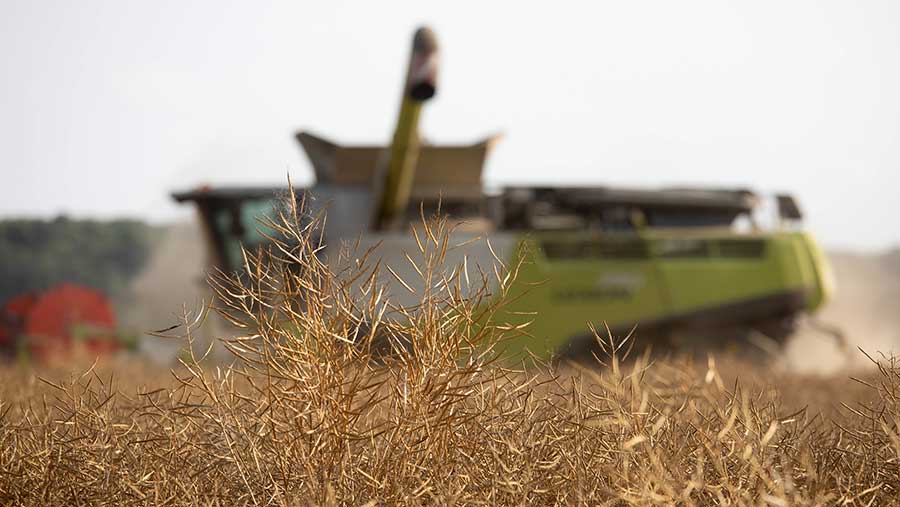Cereals 2022: OSR area predicted to bounce back by 17%
 © Tim Scrivener
© Tim Scrivener Oilseed rape plantings are set to bounce back by 17% this autumn, according to a survey of growers.
This is on the back of the best crop survival and conditions seen for a least three years and the highest rapeseed prices in living memory.
See also: Why primed OSR seed could help with crop establishment
The 170 growers taking part in Bayer’s annual Dekalb benchmarking study at flowering showed a modern-day record 92% of crops drilled being taken to harvest this season.
The level of cabbage stem flea beetle pressure reported at establishment was less than the previous autumn – with 90% of growers seeing a less than substantial challenge from the pest and virtually no challenge.
Even so, crop establishment averaged 7.4 on a scale of 0-10, which was slightly down on last year.
This seems to have been more than offset in crop survival terms by much more favourable winter growing conditions and lower average levels of flea beetle larval damage, says study co-ordinator Richard Williams.
April condition of the crop is markedly better that last season. Based on this, almost two-thirds of growers expect their harvest performance to be better than in 2021, and more than half of these anticipate much higher yields.
Another key message is that more than half of growers involved in the study intend to increase their OSR plantings this autumn, while only a quarter plan to reduce their area.
This change is made up of an average 31ha expansion for those looking to up their area, against an average 20ha contraction by those cutting back.
Consequently, more than 14,250ha is planned for planting this autumn against 12.250ha currently being grown – a year-on-year increase of 16.6%.
Mr Williams adds that while growers across the UK are upping their area, there is noticeably greater expansion among those in the West Midlands, Wales and the South.
“Also reflecting the better condition of their crops this year, the earliest drillers are notably more positive in their crop planting intentions than the average, while those sowing the bulk in mid-August are less so.”
He believes this suggests the marked trend he has seen in earlier drilling during three years of studies is set to continue.
The survey has also shown a swing from conventional to hybrid.
